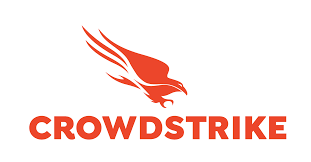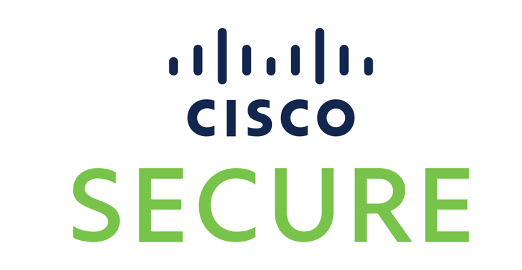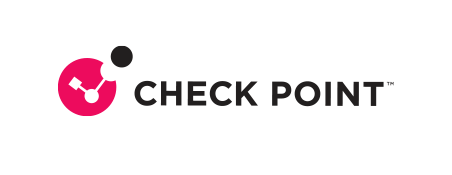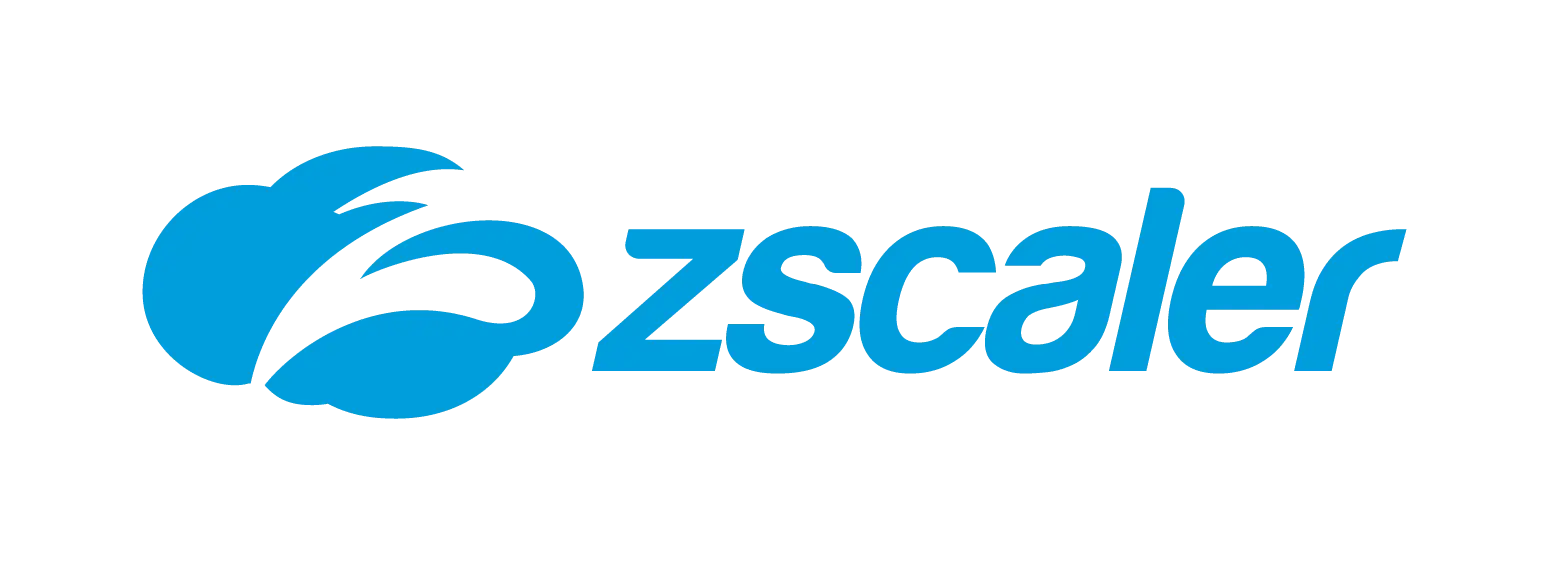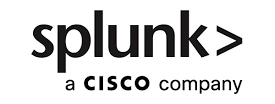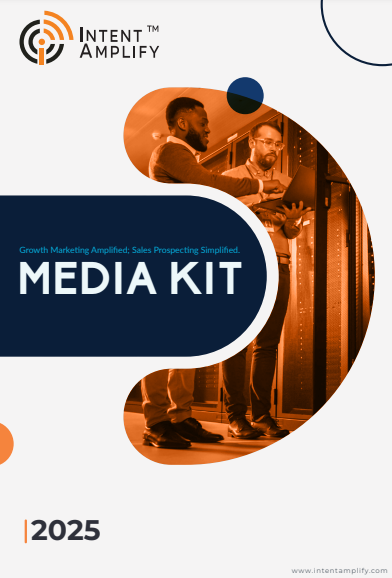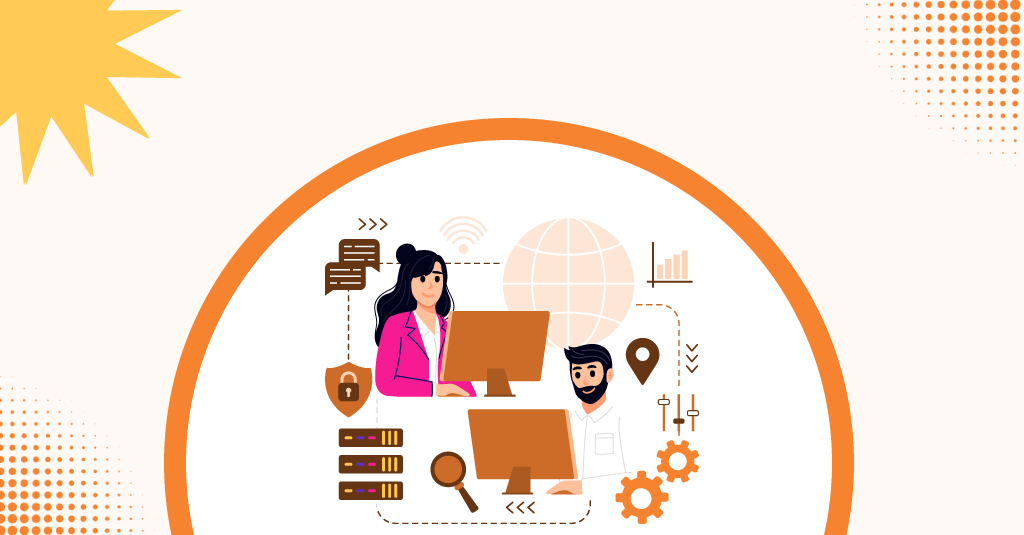
Top 10 B2B CyberTech Companies in the US (2025 Edition)
- Last updated on: September 17, 2025
In 2025, cybersecurity has changed from being a defense mechanism to becoming a necessity for businesses. The road to digital transformation, on which organizations are speeding, has exposed them to an endless array of cyber threats, such as attacks powered by AI and threats of the quantum era. It is the B2B CyberTech firms who are the ones implementing this change with their high-tech solutions to protect data, secure the network, and keep up with the regulations.
This article presents the 10 top B2B CyberTech companies of the United States, each of which is at the forefront of the race for innovation and lead generation. The way in enterprise cybersecurity. They have been selected based on their ground-breaking tech, visionary ideas, and recent activities that have contributed to the protection of businesses all over the country.
B2B CyberTech’s Position in Modern Businesses
CyberTech represents a revolution in the world of cybersecurity, and it features ground-breaking technologies such as artificial intelligence (AI), automation, machine learning, and predictive analytics that allow one to be constantly a step ahead of cybercriminals. This isn’t the regular, traditional cybersecurity. This is a reactive system, whereas B2B CyberTech is proactive and defense-focused.
These are the sorts of technologies and programs that can foresee threats, uncover irregularities in real time, and react at the speed of machines. CyberTech also has cloud-native technologies, Zero Trust Architectures, and quantum-resistant encryption, and thus it is a core element to businesses operating in hybrid and distributed ecosystems.
What Makes B2B CyberTech Necessary in 2025
In the present interconnected world, every digital interaction is fraught with risk. The use of cloud computing, IoT devices, and remote work has exponentially increased the attack surface for companies. AI has been adopted by cybercriminals to carry out smarter and more precise attacks.
According to recent industry statistics, the most typical data breach in the U.S. will lead to costs exceeding $10 million by the end of 2025. This makes a cyber incident not only a technical issue but a serious business threat as well. Concurrently, government regulations such as CISA mandates and the NIST Cybersecurity Framework 2.0 are urging companies to implement stronger and more automated defense systems. B2B CyberTech solutions enable companies to tackle such problems by providing real-time threat detection, automation of remediation, and compliance support – all of which play a vital role in the establishment of trust and the smooth running of operations during times of crisis.
U.S. Cybersecurity Market Outlook
America continues to be the biggest innovator in the global cybersecurity field and can count on a strong B2B CyberTech vendor ecosystem. The American cybersecurity industry is forecast to increase its revenue from $72 billion in 2024 to over $100 billion by 2027. This trend will largely be driven by investments in AI-led platforms, Zero Trust implementations, and next-gen identity management. In this context, the companies featured here are not only the market leaders but also the major actors who are shaping the future of business security.
Here are 10 B2B CyberTech leaders whose contributions define the U.S. cybersecurity market in 2025. They have all made radical innovations, commanded top positions in the market, and been dedicated to making the digital world a safer place.
1. Palo Alto Networks
Palo Alto Networks has always been one of the most reliable names in cybersecurity at the enterprise level, especially in B2B CyberTech. It offers end-to-end product offerings that empower organizations to keep up with the ever-changing threats. The company, based in Santa Clara, California, has been using AI-driven platforms and Zero Trust network security to modernize cybersecurity for a long time.
Key Innovations
- Some of the Palo Alto products are Prisma Cloud, a cloud-native security platform, and Cortex AI, which is an AI-driven threat detection and response system.
- Its Next-Generation Firewalls (NGFWs) are still the leaders in performance as well as flexibility in the industry.
- In 2025, Palo Alto has deepened its commitment to AI across its product stack. In doing so, it has enabled the use of predictive analytics that can forecast intrusions before they even happen.
Recent Developments
- In November 2024, Palo Alto completed the acquisition of a leading AI security startup, giving its machine learning technology a boost for real-time threat prediction.
- The enterprise launched Prisma Cloud 5.0, which offers more advanced features for securing containers and Kubernetes.
- Top-line revenue for Palo Alto exceeded $10 billion a year, which was a reflection of the strong uptake in areas such as finance, healthcare, and government within the industry.
Palo Alto Networks stays at the top as a result of its holistic cybersecurity concept that combines network, cloud, and endpoint security into one seamless platform. Its end-to-end visibility and control are what enterprises with complex, global operations like most. As cyber threats become more complex, Palo Alto’s Zero Trust leadership and AI-first approach keep it one step ahead of the B2B CyberTech curve.
2. CrowdStrike
The beginnings of CrowdStrike date back to 2011. The company is nowadays among the most powerful and influential cybersecurity companies all over the globe. The Falcon platform is behind the fame of CrowdStrike, a company that focuses on endpoint security, threat intelligence, and attack response. The use of AI by CrowdStrike has turned it into a Necessity for enterprises in search of cloud-native and easily scalable solutions.
Key Innovations
- The Falcon platform provides detailed visibility into identities as well as workloads and endpoints.
- CrowdStrike allows organizations to integrate the practice of real-time threat detection and automated response, thus minimizing the dwell time significantly. The time during which the malicious actors remain inside the victim’s system without being detected.
As of now, CrowdStrike has elevated Falcon Next-Gen AI capabilities in such a way that predictive analytics play a vital role in unveiling new attack vectors well before any harm is done by 2025.
Recent Developments
- In January 2025, CrowdStrike signed a significant contract with the U.S. Department of Defense to provide support for national cyber defense initiatives.
- The company announced that it had achieved incredible growth. The revenues from the annual recurring grew to over $4.2 billion.
- CrowdStrike saw further success as it deepened ties with major cloud providers, leading to more secure multi-cloud environments.
One of the main reasons for CrowdStrike’s triumph is its commitment to speed, automation, and scalability. It can fit perfectly with the present hybrid, complex IT environments that are designed by the solutions. The company, as it keeps on gaining more partners and has had a historical record of rapid innovation, is setting the standard for AI-enabled threat detection and is one of the most preferred choices of US businesses that are looking for advanced cybersecurity.
3. Fortinet
Fortinet took its roots mainly from providing cyber solutions that bring together performance, value, and innovation. The company based in Sunnyvale, CA, is arguably best known for its FortiGate firewalls, although it is quite comprehensive in its network security, endpoint protection, and secure SD-WAN solutions.
Key Innovations
- Fortinet has its entire product lineup built upon the company’s in-house FortiOS operating system, which allows for deep integration and complete threat management.
- By 2025, Fortinet will be the leader in OT security, successfully protecting critical infrastructures in the manufacturing and energy sectors.
- The company’s Secure Access Service Edge (SASE) offering has also been gaining traction, facilitating secure, cloud-based connections for remote workers.
Recent Developments
- FortiOS 7.5 was released with enhanced AI-driven threat analytics.
- Fortinet’s OT security solutions were extended by the signing of partnerships with undisputed leaders in industrial automation.
- Fortinet is among the top three vendors in the global network security market by virtue of its market share.
The capacity of Fortinet to provide scalable enterprise-grade security makes it equally an option for large enterprises and mid-market businesses. Its adoption of integrated solutions takes away the complexity from security teams and, at the same time, facilitates overall threat visibility. Cyber threats, which have now targeted both IT and OT systems, have made Fortinet’s market leadership position in securing critical infrastructure even more powerful in U.S. B2B CyberTech.
4. IBM Security
IBM, one of the oldest tech companies in the world, has always been characterized by its innovation in cybersecurity. In terms of variety, the services of the IBM Security division range from AI-based threat detection to consulting and incident response.
Key Innovations
- One of the top market cybersecurity solutions from IBM, QRadar XDR, offers consolidated threat detection and response from networks, endpoints, and cloud infrastructure.
- IBM employs Watson AI to sift through mountains of threat intel data, resulting in quicker and more accurate choices.
- They didn’t stop in 2025 – IBM quadrupled its effort in quantum-safe cryptography, preparing businesses for the era of post-quantum cyber threats.
Recent Developments
- The QRadar AI Assistant was unveiled, which is a solution dependent on generative AI to automate incident response workflows.
- Several partnerships with U.S. federal government agencies have been established to support national cyber resilience.
- The pace of change in compliance requirements has prompted IBM to broaden its advisory services to help companies keep up.
IBM Security owes its value to the all-in-one software, hardware, and professional services that it offers. What sets IBM apart and what really makes it a force to reckon with in next-generation cybersecurity problems is its strong proficiency in AI and quantum computing. As a globally capable strategic partner, IBM is still among the first-choice solutions in the B2B CyberTech arena for firms that require one.
5. Microsoft Security
Microsoft has changed significantly over the years; it is no longer just a software giant but has grown to become a leader in security. With its enormous cloud setup and its vast customer base all over the world, Microsoft is positioned to offer security solutions that are not only complete but also scalable.
Key Innovations
- Components of the Microsoft Defender XDR ecosystem provide a comprehensive security framework that covers identities, endpoints, applications, and data.
- For 2025, Microsoft has enabled Copilot AI in its security product for the automated incident response that happens concurrently with threat evaluation.
- Besides that, Microsoft is a pioneer of Zero Trust concepts, thus making it easier for enterprises to implement the latest secure-by-design networks and identity models.
Recent Developments
- Introduced Defender Copilot, an AI assistant for the security operation center (SOC) teams.
- Put in $3 billion for security research and development facilities in the United States.
- Transformed government leadership with new FedRAMP-approved services.
One of the biggest assets of Microsoft is the deep connection it has with the IT infrastructures of large enterprises, especially the ones that are already using Azure and Microsoft 365. The joining of deeply advanced AI with extremely high data telemetry has resulted in Microsoft Security providing strong but easy-to-implement solutions, which are among the reasons why it still remains the top choice for businesses in the USA of all kinds and sizes.
6. Cisco Secure
Cisco Systems, the leader in networking, has taken full advantage of its know-how to put together a comprehensive portfolio of cybersecurity products and services marketed under the Cisco Secure brand. Cisco’s solutions aim to provide total visibility and control of intricate IT environments.
Key Innovations
- Cisco Secure Connect architecture integrates security and networking functions seamlessly with support for cloud-based, multi-cloud, and on-premises environments.
- Its XDR (Extended Detection and Response) functionalities give a holistic view that enables security personnel to react in a timely and efficient manner.
- In 2025, Cisco is investing heavily in AI-powered network analysis for anomaly detection and the prevention of insider threats.
Recent Developments
- Cisco announced Cisco XDR 3.0 with enhanced machine learning capability.
- Entered into partnerships with top cloud providers for fostering cross-cloud interoperability.
- Expanded the reach of its cybersecurity training initiatives to address the shortage of skills in the industry.
- The forte of Cisco is its potential to close the rift between networking and cybersecurity, thus providing solutions that are in sync with the pace of the modern IT infrastructure. For those businesses having difficulties staying ahead of digital transformation, what Cisco Secure offers is the visibility and control that are the key to getting ahead of the most advanced cyber attackers.
7. Check Point Software Technologies
Check Point Software Technologies is a veteran and prestigious name in the cybersecurity market that has been around since 1993. The company has always been on the cutting edge of technologies and has a very strong positioning in network security, cloud security, and threat intelligence. Check Point is widely used in various U.S. sectors such as government, banking, and healthcare because of its scalability and reliability.
In 2025, Check Point will still represent the first choice for end-to-end security solutions that achieve the right balance between pioneering and stability. With more than 100,000 customers worldwide, its status is only reinforced as threats evolve and become more sophisticated.
Key Innovations
- Infinity Architecture unifies security for networks, endpoints, mobiles, and the cloud. That integrative method assures that all the possible ways for an attacker to exploit vulnerabilities are both watched and secured in real time.
- Quantum Security Gateways are high-performance hardware for hybrid cloud infrastructures.
- Harmony Suite is an end-to-end protection for endpoints, mobile, and email communications.
- ThreatCloud AI is an extremely updated threat intelligence platform that scans more than 150 billion threat indicators daily.
In 2024, Check Point enhanced its SASE (Secure Access Service Edge) offering by bringing on Perimeter 81, a provider of cloud-native security designed for remote and hybrid workers with simplified management.
Recent Developments
- Infinity AI Copilot: Launched in the middle of 2024, it is an AI-powered generative assistant that streamlines threat detection and response; thus, it can relieve the SOC team’s load by up to 40%.
- Strategic Partnerships: Cloud industry leaders such as AWS and Microsoft Azure have been signing up more partnership deals with Check Point, thus facilitating a seamless integration of hybrid security configurations.
- AI-Enhanced ThreatCloud: To make it even harder for attackers who use AI technologies to mount phishing and deepfake scams, they have included even more machine learning levels in their efforts to meet the trend.
Combining the cutting-edge innovation of Check Point with the trust in the marketplace that it has earned over many years, it is a perfect match for organizations that require both the latest and the most stable technologies. Its recent commitment to AI-based automation has put it at the forefront of the war against advanced cyberattacks.
8. Zscaler
Zscaler is recognized worldwide for radically changing the way that businesses handle cybersecurity with its cloud-native Zero Trust Exchange platform. Instead of relying on traditional network perimeters, Zscaler delivers secure, direct-to-cloud connections for distributed applications and workforces.
It is Zscaler that, by 2025, will have become the top pick for companies that want to keep their hybrid and remote operations safe. Its customers make up more than 40% of the Fortune 500 companies, which makes it one of the cloud security providers with the highest impact in the United States.
Key Innovations
- The Zero Trust Exchange from Zscaler is the company’s leading solution, and it offers a complete environment for security access and policy enforcement.
- Zscaler Internet Access (ZIA) is a product that ensures safe and secure access to the internet. And all this happens through checking traffic at the edge.
- Zscaler Private Access (ZPA) is a zero-trust remote access solution that gives no access to the internal applications via VPNs.
- AI-Powered Threat Intelligence uses machine learning to predict, hinder, and exterminate cyberattacks.
In 2024, Zscaler expanded its offerings with Risk360, a risk management dashboard that gives CISOs visibility into user behavior, application vulnerabilities, and network threats to make decisions.
Recent Developments
- By joining forces with ServiceNow, Zscaler has integrated AI-powered incident response into the workflows of ServiceNow and increased the efficiency of remediation for enterprise SOC teams.
- Broadened FedRAMP Certification helped Zscaler to consolidate its presence in the public sector in the U.S. with the highest level of compliance.
- Generative AI Policies incorporated predictive abilities using generative AI to automate access control management alongside policy creation.
Since most companies are adopting remote work as their new permanent work model, Zscaler’s zero-trust, cloud-first strategy is a scalable and safe alternative to traditional infrastructure. It is generally suitable for corporations that want secure worldwide security without the use of heavy hardware.
9. Okta
Okta is the top name in the identity and access management (IAM) industry that supports businesses in securing user authentication while giving users an easy digital experience. Located in San Francisco, Okta is now an integral part of zero-trust security frameworks.
Identity is one of the most critical aspects of cybersecurity in 2025, as stolen credentials remain one of the main causes of attacks. Okta is committed to making and keeping the identity simple and secure in multi-cloud environments that are complicated.
Key Innovations
- Okta addresses both workforce and customer identity needs with its platform:
- Single Sign-On (SSO) Simplifies access and, at the same time, reduces password fatigue.
- Adaptive Multi-Factor Authentication (MFA) sets up more security with the help of AI-based risk signals.
- Customer Identity Cloud delivers easy and secure user onboarding experiences.
- Lifecycle Management Tools support user account provisioning and deprovisioning by automation.
In 2024, Okta established AI-powered Identity Threat Protection, which is able to foresee credential compromise before the actual attackers use the credentials in the attack.
Recent Developments
- Quantum-Safe Encryption: After teaming up with Google Cloud, Okta came up with encryption protocols that can resist attacks from post-quantum computers.
- Compliance Feature Enhancements: New features that help U.S. companies to comply with HIPAA, GDPR, and CCPA.
- API Security Advancement: Revamped API security functionalities countering the growing number of API-based attacks.
Oktas’ deep commitment to identity makes the platform indispensable for organizations going in for zero-trust principles. Its comprehensive integration platform, having over 7,000 applications, makes it simple to roll out for any business size.
10. SentinelOne
SentinelOne has morphed into one of the rapidly growing cybersecurity ventures with its AI-powered autonomous technology that offers next-generation endpoint as well as cloud security. Acting like CrowdStrike’s rival, only focusing on the opposite side, namely automation and velocity, SentinelOne is doing the job of threat detection and remediation without the intervention of a human.
Key Innovations
- SentinelOne’s Singularity XDR platform is transforming the security landscape by unifying endpoint security, cloud security, and IoT visibility within a single interface.
- Autonomous AI Protection: This product identifies security threats and takes action immediately, without delay.
- Ranger IoT Module: Keeps devices that are not managed safe, which is very important for industrial IoT places.
- Purple AI: A generative AI assistant formed in 2024 to support SOC teams with preemptive ideas.
Recent Developments
- AWS Integration: Gained status as an AWS partner to become integrated with Amazon Security Lake for more efficient cloud threat management.
- FedRamp High Authorization: Achieved this certification, which enables the company to access the US government market where federal cybersecurity standards are highly stringent.
- Generative AI Updates: One aspect of the technology that has been refined is the natural language processing facility. This is given to Purple AI to make real-time threat sensing possible.
SentinelOne has an accelerated growth story and focuses on completely AI-driven automation. It has made the company a good fit for security teams. Those security teams that are small in number or those that want to simplify operations yet retain strong defensive capabilities.
Bonus One: Splunk (Acquired by Cisco Security)
Splunk has been equated with security analytics and SIEM (Security Information and Event Management) for years. In 2023, Cisco acquired Splunk in a record $28 billion merger, combining Splunk’s data knowledge with Cisco’s network security leadership.
Most Important Innovations
- Splunk excels at offering deep visibility into IT, cloud, and security environments.
- Most significant offerings include:
- Splunk Security Cloud: Real-time threat detection and incident response driven by machine learning.
- Generative AI Assist: AI platform for SOC teams to automate incident investigation processes and prioritize alerts.
- Integrated Compliance Reporting: Facilitates ease of regulatory auditing for U.S. businesses.
Recent Developments
- U.S. Data Center Expansion: Cisco spent $1 billion to expand data centers for Splunk, enhancing service performance and availability for American customers.
- Boosted AI Analytics: Deployed sophisticated models to predict supply chain weaknesses and insider threats.
- Unified Platform Vision: Cisco and Splunk also announced together plans to introduce a completely integrated security analytics suite by late 2025.
Splunk’s analytics with Cisco’s infrastructure mastery provides unmatched visibility. It’s optimally suited for big enterprises that require data-driven insights and sophisticated compliance management.
Comparative Insights: Navigating the Top 10 CyberTech Leaders
U.S. B2B CyberTech requirements are as varied as the threats against them. Picking the right cybersecurity ally entails more than simply choosing a household name—it entails a profound familiarity with your company’s organizational hierarchy, regulatory requirements of your business sector, and future digital vision. The top 10 B2B CyberTech firms listed here possess complementary yet unique strengths that suit varying priorities.
AI-Driven Endpoint Protection
CrowdStrike has one of the most mature and scalable endpoint protection environments. Its Falcon platform relies on cloud-native architecture and AI-based threat intelligence to provide proactive defense. CrowdStrike is also renowned for top-notch threat hunting services, which especially recommend it to highly targeted sectors like finance and defense.
SentinelOne, conversely, is best suited to businesses that need maximum automation with minimal human intervention. Its Singularity platform offers self-healing endpoint security that can remediate threats autonomously. This makes it a good choice for mid-sized businesses or IT departments with limited cybersecurity personnel who need sophisticated protection.
For organizations whose major concern is endpoint attacks such as ransomware, these two firms are the gold standard. CrowdStrike is strong in scalability and depth, whereas SentinelOne excels in speed and automation.
Zero Trust Architecture and Secure Access
Zscaler is a market leader in this area, with its emphasis on protecting remote and hybrid workforces through its cloud-native Zero Trust Exchange platform. Its methodology reduces attack surfaces by imposing ongoing verification and least-privilege access. Zscaler is especially beneficial to organizations that are going through digital transformation, where the traditional network boundaries cease to exist.
Okta supports this strategy with precision identity and access management (IAM). As Zscaler concentrates on safe network connectivity, Okta takes car
e of authenticating and managing the identity of each user, whether it’s a company employee or an external customer. Its adaptive multi-factor authentication and customer identity capabilities lower the threat of credential-based attacks, which are some of the most prevalent cyber threats today.
For organizations that want to deploy end-to-end Zero Trust approaches, Zscaler and Okta are usually best used together. They form a platform for secure connectivity and identity that fits with today’s best practices in cybersecurity.
Compliance and Regulatory Excellence
No one has more experience in this space than IBM Security, which has spent decades working with the globe’s most heavily regulated sectors. Its QRadar SIEM and Guardium data security solutions are go-tos for companies that require complete data visibility and regulatory compliance.
Cisco, particularly with the addition of Splunk after its acquisition, now has profound analytics and reporting features. The union has enhanced Cisco’s reputation as a compliance-friendly solutions provider so that organizations can better prove their adherence to standards while better detecting threats.
For organizations where an audit failure would cost millions in fines or damage to reputation. IBM Security is still the best go-to for strategy and services. But Cisco’s analytics enablement gives the visibility necessary to stay compliant at scale.
Cost-Effective, High-Performance Solutions
Fortinet has established a solid niche here, providing affordable, scalable network security without sacrificing performance. Its FortiGate firewalls and FortiGuard threat intelligence services offer enterprise-level protection at a fraction of what competing products cost.
Fortinet’s hardware-based solution is particularly attractive to retail, educational, and manufacturing sectors, where dispersed locations and budgetary limitations call for cost-effective, effective security investments. The vendor’s emphasis on unified threat management (UTM) also streamlines operations for resource-starved IT staff.
Government and Federal Security Needs
Check Point Software Technologies has been a government favorite for a long time due to its strong, policy-enforced security architecture. Its solutions focus on data sovereignty, compliance, and high-assurance threat prevention. These are exactly what federal and state-level organizations are seeking.
SentinelOne, being automatic and self-healing, also finds favor with government customers. Its AI-powered threat intelligence enables agencies to protect against nation-state actors and advanced persistent threats (APTs). While maintaining compliance with federal cybersecurity regulations.
In public-sector customers, the decision is typically whether they require old-fashioned. Or highly managed infrastructure (Check Point) or new, AI-driven automation (SentinelOne).
Layered Defense Through Multi-Vendor Strategies
No one vendor can meet all cybersecurity requirements, particularly as threats adapt and organizational architectures grow more complicated. The most secure organizations embrace multi-vendor approaches, taking specialized tools across each security layer.
Businesses can construct responsive, layered security capable of defending against today’s cyber attacks. By strategically choosing and combining solutions from these leading vendors. This not only lowers risk but also enhances flexibility, so that as technology changes, the organization’s security stance can change with it.
The Bottom Line
The U.S. cybersecurity industry is full of innovation, but also complexity. CrowdStrike, IBM, Cisco, Fortinet, Palo Alto Networks, Check Point, Zscaler, Okta, and SentinelOne all bring something different to the table in B2B CyberTech. The secret for decision-makers is to connect vendor choice with business objectives. Be that regulatory compliance, endpoint protection, Zero Trust transformation, or cost optimization.
By 2026 and onwards, businesses that adopt a strategic, multi-faceted cybersecurity strategy will be in the best position to protect against the next generation of cyber threats. While remaining agile and resilient in a tumultuous digital environment.
The world of cybersecurity requires agility, innovation, and active defense. All ten companies are the leaders in B2B CyberTech, leading the way in AI, zero trust, and automation. U.S. businesses need to emphasize creating a security ecosystem. That Ecosystem should meet their individual requirements while getting ready for the future generation of cyber threats.
FAQs
1. Which is the best cybersecurity company for SMBs?
Fortinet and SentinelOne provide scalable, affordable options well-suited for small and mid-sized organizations.
2. What is Zero Trust, and why does it matter in B2B CyberTech?
Zero Trust assumes that no device or user is trustworthy by default. It lowers the risk of breach in remote and hybrid work settings.
3. How do AI tools enhance cybersecurity operations?
AI improves threat detection, minimizes false positives, and streamlines incident response, enabling teams to respond more quickly and intelligently.
4. Do businesses use one or multiple vendors?
Multivendor, layered security is more robust and effective against sophisticated attacks.
5. What will B2B CyberTech look like in 2026?
Look for breakthroughs in quantum-safe encryption, more AI-powered attacks, and more stringent global compliance requirements.



